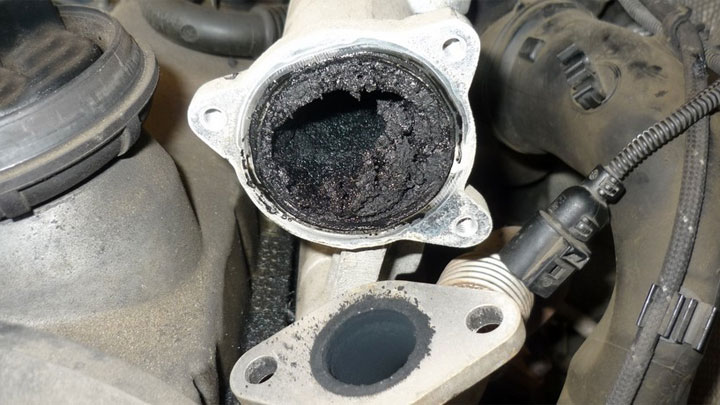3 Symptoms of a Bad EGR Valve
Is your engine losing power or shutting off unexpectedly? A faulty EGR valve could be the culprit. Let’s take a look at the most common symptoms of a faulty exhaust gas recirculation valve (including the error code that usually appears and the expected repair cost).
3 Symptoms of a Bad EGR Valve
1) Check the Engine Light
When the “Check Engine Light” comes on on your car’s dashboard, your car’s computer is telling you that there’s a problem with a particular part or system in your car. One possibility is a faulty EGR valve. Typically, the vehicle’s computer can detect the position or circuit of the EGR valve.
If a problem is detected with one of these valves, the Check Engine Light will come on and the driver can use a diagnostic scanner or take the vehicle to a mechanic to check the problem.
It’s important to view the specific trouble code for the part, as an illuminated Check Engine Light can indicate over 100 issues. Common trouble codes for EGR issues include P0400, P0401, P0402, P0403, P0404, and P0405. Check various online resources to find out what the actual error code means.
2) Reduced engine power
When you have a problem with your EGR valve, the first symptom you will notice is engine performance issues. If your EGR valve is not working properly or is simply clogged, it will disrupt your vehicle’s air-fuel ratio. This will cause all kinds of engine problems, such as: B. Poor acceleration, fuel economy, and performance.
3) Rough engine idling
A common symptom caused by a defective EGR valve in your vehicle is a rough idle, where the speed fluctuates or drops below a certain threshold.
When the EGR valve fails, it may stay in the open position or may increase in speed on its own. Exhaust gas recirculation then causes rough idling whether conditions are desirable or not.
Causes of EGR Valve Failure
Carbon Deposition
Over time, carbon deposits can build up within the EGR valve, causing it to stick open or stay closed. Exhaust gases contain carbon particles that can deposit on the journals and valve seats. This restricts their movement and their ability to regulate exhaust gas recirculation.
Clogged Passages
The passages that allow exhaust gases to pass through the EGR valve can become clogged with carbon deposits, oil ash, and combustion by-products. These deposits restrict the flow of gas through the valve, causing improper EGR operation.
Electrical Problems
The solenoid or motor that controls the opening and closing of the EGR valve can fail electrically. This can cause the valve to operate improperly or not at all. Magnet failures are often caused by current surges or voltage spikes.
Vacuum Leaks
The vacuum line controls the operation of the EGR valve on many vehicles. Because the valve relies on vacuum for proper positioning, leaks in these lines prevent accurate valve control. This results in poor EGR performance.
Aging and Wear
Like any other mechanical part, the EGR valve will simply wear out with many heating and cooling cycles. The valve seats and journals corrode, causing leaks and poor control of the exhaust flow. Most EGR valves have a lifespan of 80,000 to 100,000 miles before needing replacement.
EGR Valve Maintenance Tips
You should have your car’s air intake serviced every 50,000 miles to remove any carbon or sludge buildup that may have built up in your car’s intake system.
And of course, you should also have your oil changed regularly to reduce the chances of sludge buildup in your engine.

